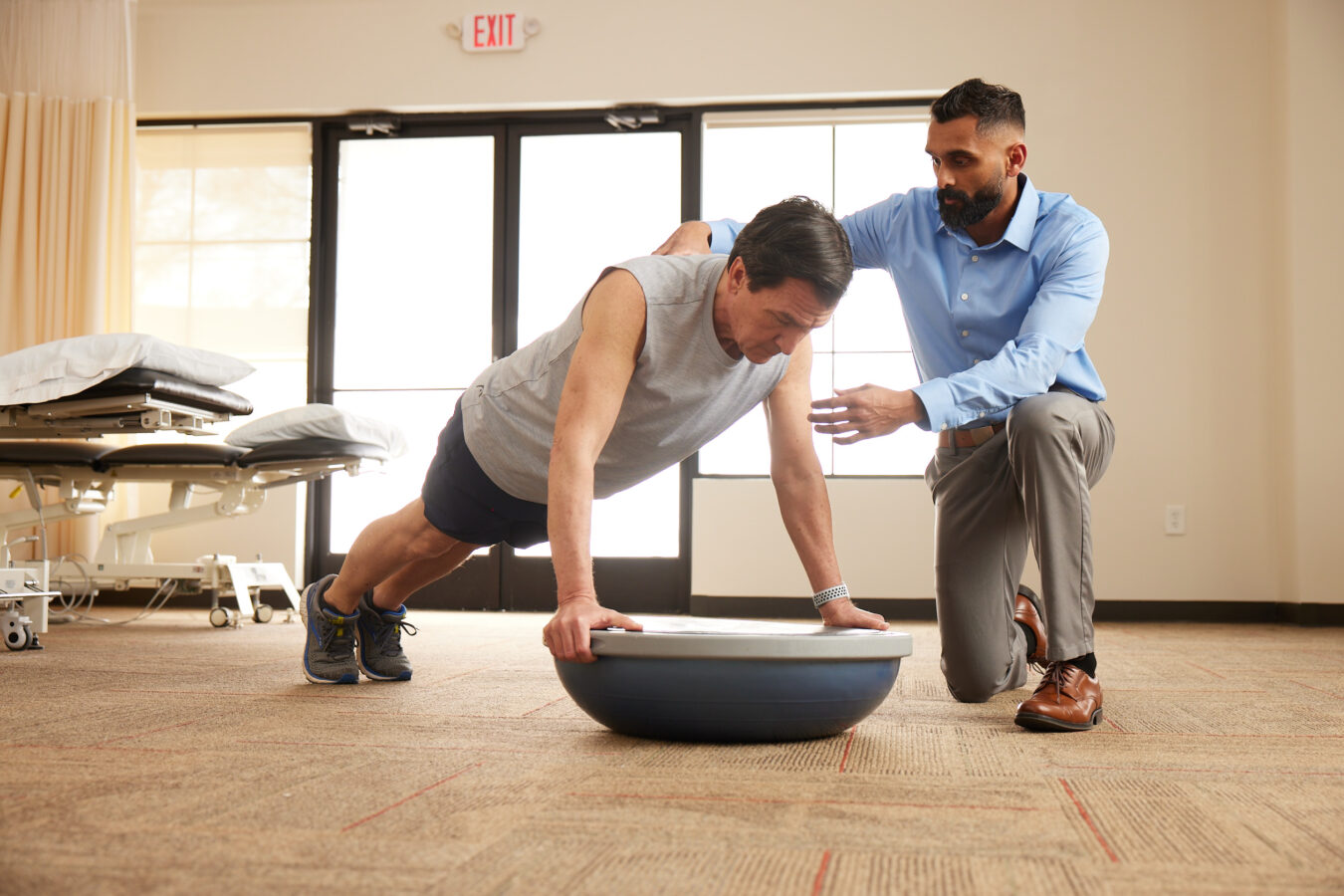
In the United States, one in four adults live with some form of arthritis, and 10% say their symptoms interfere with daily activities. If you are looking for a non-invasive, natural way to improve your quality of life, you might be wondering, does physical therapy help arthritis? For many patients living with arthritis and other joint conditions, the answer is a resounding yes! Learn about 7 ways physical therapy can help with arthritis and help you feel and move better every day.
Pain is a clue that something is going on in the body that needs attention, and it should never be dismissed. Joint pain is one of the most common types of chronic pain, with chronic pain defined as pain that occurs for at least half of days in a six-month period.
Long-term pain not only impacts a person’s quality of life. Over time, chronic pain can increase the risk of anxiety, depression, and other mood disorders. Physical therapy is often recommended for people living with chronic arthritis pain because of the many benefits it offers.
No two physical therapy programs are alike. Every arthritis management plan is customized for the patient’s age, diagnosis, symptoms. But they all have one thing in common: they improve the lives of patients living with arthritis pain..
Here are the most common physical therapy programs used to achieve that goal.
It may seem counterintuitive to start moving if you have body pain or stiffness. But exercise is actually one of the best ways to reduce arthritis symptoms and prevent disability, particularly for individuals with osteoarthritis, the most common form of arthritis.
Known as the “wear and tear” disease, osteoarthritis occurs when the cartilage that cushions the joints breaks down through age, injury, or overuse. Treatment for osteoarthritis and other common types of arthritis consists of a combination of therapies that include physical activity.
Exercise serves many purposes. It lubricates joints for smoother movement and builds muscle strength for joint stability. Regular exercise improves balance and coordination which also helps prevent injuries.
After an initial physical therapy screening to assess your symptoms and health and wellness goals, your therapist creates an exercise program consisting of low-impact, pain-free movements that won’t twist, pound, or stress vulnerable joints. Continue the exercises you learn in the physical therapy clinic at home to counteract pain and stiffness every day.
Aquatic therapy, or water therapy, is a physical therapy technique offering all of the benefits of traditional, land-based exercise—but with less stress on the body’s joints. This makes water-based therapy ideal for patients with arthritis and other conditions that impair mobility and function.
Because water is buoyant, it supports the patient’s weight against the effects of gravity. Water has 12 times the resistance of air, making it a safe and effective environment to build muscle strength.
Patients with arthritis find that aquatic therapy allows them to move freely without pain, improve flexibility and mobility, and get stronger without weights. Compression that occurs under water also increases blood flow and decreases swelling, to combat the inflammation commonly associated with arthritis.
Weight is an important consideration for anyone with arthritis. The reality is excess weight further burdens damaged and inflamed joints. According to the Arthritis Foundation, being just 10 pounds overweight adds an extra 15 to 50 pounds of weight on your knees, which are the joints most commonly affected by arthritis.
Added weight also speeds up the breakdown of cartilage, further weakening joints. Fat also contains proteins that travel throughout the body and cause inflammation, even in joints that are not weight-bearing. These are just a few reasons why individuals with arthritis should make it a priority to maintain a healthy weight.
Physical therapy is a tool for losing weight safely and gradually with strategic, low-impact exercise and lifestyle modifications, all under the supervision of a trained physical therapist. Your therapist monitors your progress and adjusts your treatment plan as your needs and goals change over time. Getting healthy is a lifetime journey and your therapist is there to guide you every step of the way.
Learning about your condition and the best ways to stay healthy aren’t the same as getting up and moving your body. But education about how your lifestyle choices impact your mind and body is just as important as exercise for patients with arthritis.
Look to your therapist for tips on the best foods to eat for your condition, safe modifications for your daily activities, and tips for how to sit, walk, sleep, and work to maintain good posture for happy and healthy muscles and bones.
Think of your physical therapist as a teacher who is there to help you to make informed decisions to improve your quality of life and stay as active as you want to be. Don’t hesitate to ask questions and share any concerns as you progress along your physical therapy journey.
An arthritis diagnosis does not mean you have to say good-bye to the activities you enjoy or give up your independence. Physical therapy is a tool to help you stay mobile and pain-free through personalized exercise and treatments.
So, we’ve answered the question does PT help arthritis? Are you ready to learn how physical therapy can make a difference for you? Find a physical therapy clinic near you.